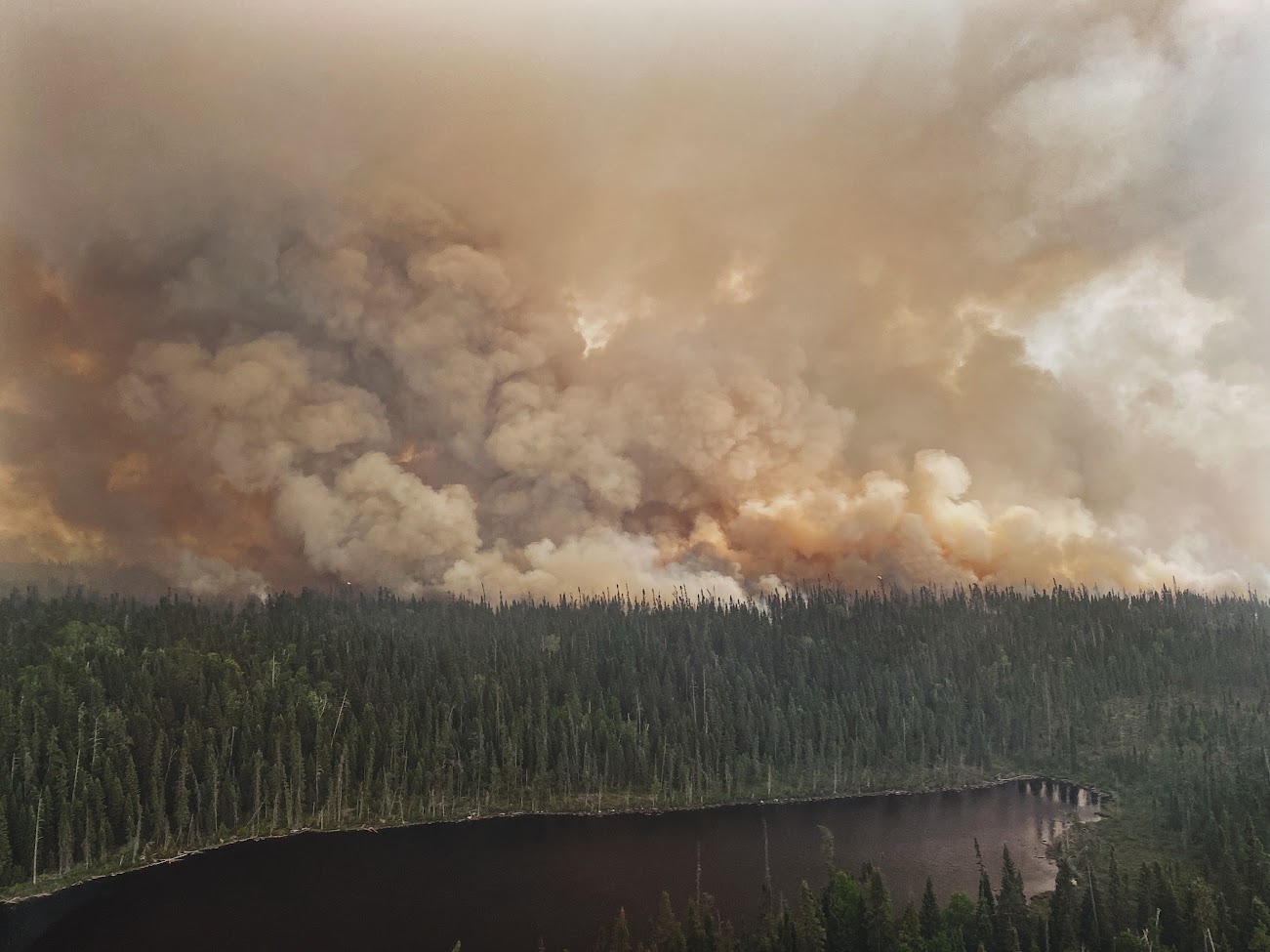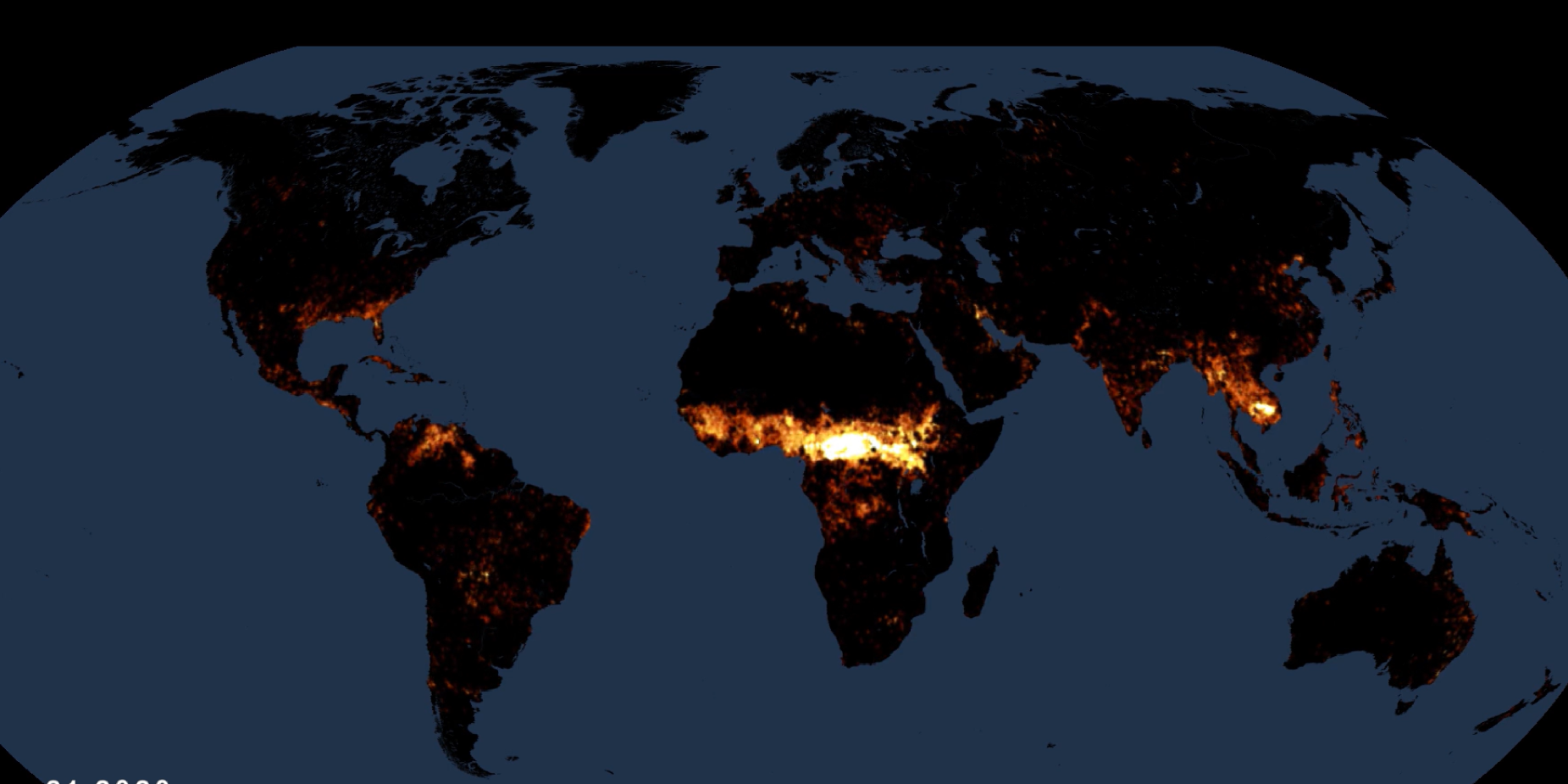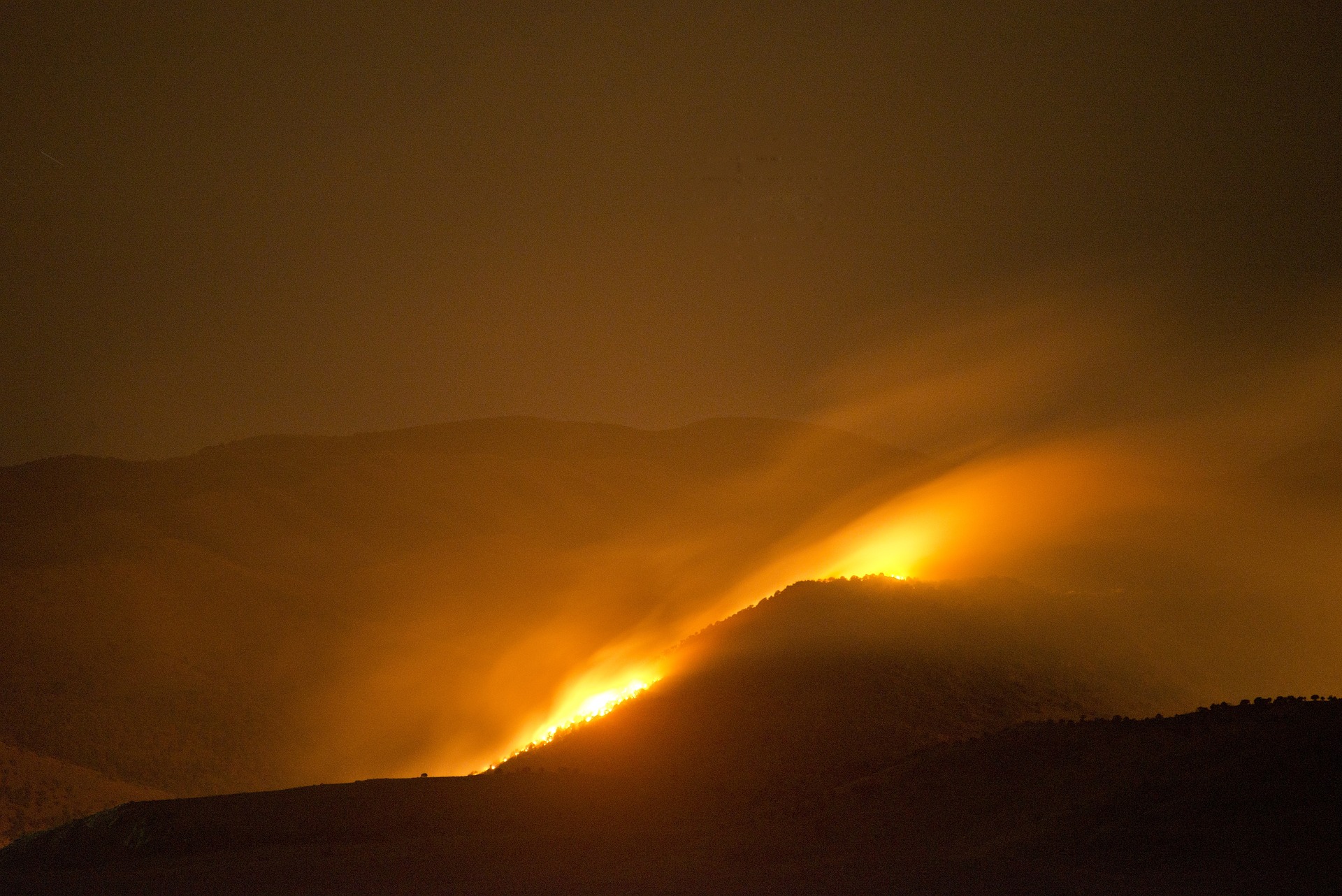Air Quality Team
Fire, Atmosphere, Air Quality, & HealthWildfire smoke presents a significant and multifaceted public health challenge, demanding a comprehensive approach that encompasses increased knowledge, improved fire management, accurate air quality information, enhanced education, and robust healthcare readiness.

Fire-Veg Team
Fire-Vegetation Interactions: incorporating a realistic treatment of fire-vegetation interactions in the next generation of fire and earth system models.Current approaches to modelling fire do not take account of the fact that most vegetation types are fire-adapted, but this varies with the nature of the fire regime. Similarly, current models also do not take account the flammability of the vegetation, even though it can be important for the type of fire
The goal of this team is therefore to develop a better understanding of vegetation-fire interactions and the implications of these interactions for fire modelling at a global scale. We will use these insights to develop a new fire-enabled vegetation model, suitable for coupling in a land-surface modelling scheme. It will allow us to explore how changing climate will affect fire regimes, and how this in turn will affect vegetation properties, biodiversity, and ecosystem post-fire recovery. It will also provide a platform for investigating management strategies for mitigating the effects of future changes on fire regimes.
Team Leads: Dr Olivia Haas, Prof Sandy Harrison and Prof Colin Prentice

WIR3 Team
Wildfire Insurance, Risk, Regulation and RecoveryInsurance is a mechanism not just for financing recovery from wildfires, but also for incentivising risk reduction. However, those insurance mechanisms of risk management are struggling to cope with wildfires, whose frequency and severity are increasing in ways that are poorly understood, not least because of their dependence on loosely coupled and endogenous feedbacks with insurance and property markets, public expectations and behaviour, and with the political and regulatory systems for governing land use, insurance provision, and disaster financing.

Just Fire Team
Just Fire: identifying equitable fire governance, livelihoods and futures.The aim of this team is to promote ecologically sound and socially just approaches to fire management and governance that combine scientific and traditional knowledge systems and support the livelihoods and rights of Indigenous and local communities. To date, we have collected information on different forms of fire use, both at the global and local scales, and analysed it to understand general patterns, including recent human fire use at the regional and global scales, and the changing interactions between fire and the livelihoods and rights of Indigenous and local communities.
This team will build on this work, focusing on three themes, each of which will benefit from deep-dive research in one or more case study area: (1) Fire governance – analysing whether and how fire is represented in international agreements and national laws, and how these constrain and/or enable local level fire governance; (2) Fires, livelihoods and biodiversity -explores the role of fire in mediating the relationship between cultural diversity and biodiversity; and (3) Future fire – asking how fire use is likely to change into the future, taking into account both climatic changes and potential governance responses to those changes.
Team Leads: Prof Jay Mistry, Prof Kate Schreckenberg and Dr James Millington

Fire Info Team
Fire information System: A multi-decadal & NRT (Near Real Time) Fire Information System supporting the study of fire regimes, drivers, model representation and model development evaluation.Modern Earth Observation (EO) datasets now span over two decades, and in some cases almost four decades, providing particularly extensive information on burned areas and hotspots. However, there are many uncertainties. For example, our longest record from AVHRR Global Area Coverage (GAC) EO data reveals fire regimes behaving inconsistently with climate-driven indices of increasing landscape flammability. The intricate patterns emphasise the urgency of developing a detailed understanding of the multifaceted nature of fire, grounded in independent and well-understood datasets.
The primary focus of this team is therefore analysis of multivariate EO data to investigate local to global scale fire behaviour, trends and anomalies, and to provide data and approaches to support the enhancement, further development and testing of fire representation in models. We aim to provide a holistic understanding of the nature of fire activity on Earth and where and how this is changing, supporting examination of its impacts and feedbacks and its potential evolution into the future. The team will help us understand and document fire activity on Earth over past decades, examine current trends, and identify future anomalies. Ultimately, we aim to enhance fire modelling by (i) enabling the rigorous testing of models against this observational dataset, and (ii), help develop process scale models by learning from EO data, thereby helping to construct robust, data-aligned models.
Team Leads: Dr Jose Gomez-Dans and Prof Martin Wooster

Climate Team
Fire, Atmosphere and ClimateWildfires lead to enormous quantities of pollutants emitted into the atmosphere, and the influence of this on atmospheric composition has been sporadically investigated for a variety of regions, using different approaches. However, a) there remains large uncertainty in those effects, b) there have not been any systematic assessments of fire impacts on atmospheric composition in a holistic way, from a global perspective, going beyond the fragmented single-region, single-constituent, or single-dataset approaches that have been taken so far.
This team will therefore advance the current understanding of the role of fire in the Earth system via atmospheric composition changes by thoroughly investigating uncertain processes and impacts of fire for the first time, through a novel approach that involves the synergistic use of atmospheric composition modelling, global climate modelling, and a range of targeted observational datasets. The focus will be on important short-lived constituents such as aerosols (black carbon and organic carbon), tropospheric ozone (O3) and its precursors (NOx, CO, CH4, VOCs) whose levels and distributions are challenging to model, and exert inhomogeneous radiative forcing.
Team Leads: Prof Apostolos Voulgarakis, Prof Guillermo Rein and Dr Matt Kasoar

Mapping wildfire health risk and vulnerability in Africa
Wildfires are increasing globally and can affect human health through various routes These include diseases caused by air pollution, acute injuries,...
See detailsUse of AI and Earth Observation in quantifying Plumes of Emissions from Landscape Fires
This project focuses on the application of artificial intelligence (AI) and Earth Observation technologies to quantify emission plumes from landscape...
See detailsPeatland wildfires and their greenhouse gas emissions
Peatlands are the world's largest store of terrestrial carbon, an equivalent of around 2/3 of the carbon in the atmosphere is stored in boreal...
See detailsAdvancing Understanding of GHG and Air Pollutant Emissions through High-Resolution Airborne and Ground Based Systems
Understanding the complex interactions between fire, ecosystems, atmospheric chemistry, and climate is crucial for developing effective strategies...
See detailsDeveloping and adopting experimental capabilities for studying the physical aspects of wildfires and their emissions
Wildfires and other forms of landscape burning are complex, dynamic and in some ways difficult to predict and certainly potentially dangerous...
See detailsNorthern high-latitudes peat fires: From lab to modelling
High-latitude fires have the potential to shape the future of our climate in ways that we are currently incapable of predicting Northern peatlands...
See detailsPeatland wildfires and their greenhouse gas emissions
Peatlands are the world's largest store of terrestrial carbon, an equivalent of around 2/3 of the carbon in the atmosphere is stored in boreal...
See detailsHigh-latitude fires and the future of Earth’s climate
In high-latitude regions, larger and more frequent fires have been documented over the last years, and it is expected to increase further due to...
See detailsSmouldering peat fire in the Arctic
Recent Arctic wildfires have burned previously unheard-of expanses of land and released significant amounts of prehistoric carbon into the atmosphere...
See detailsDeveloping global modelling capabilities to represent wildfires in the Earth system
The focus of this project is to interact with all project scientists in order to continuously develop and advance our capabilities in global...
See detailsOptimality-based Wildfire Modelling
There must be enough fuel, dry and flammable conditions, suitable weather, and an ignition source to start the fire However, the amount of fuel and...
See detailsModelling Vegetation-Fire Interactions
In this research project, Olivia Haas is working how to represent vegetation-fire interactions within an eco-evolutionary optimality framework (EEO)...
See detailsInteractions between vegetation and wildfires
Vegetation provides the fuel for wildfires, and both the amount and type of vegetation exert a strong control on wildfire occurrence and intensity...
See detailsSpatial and temporal patterns of wildfires in protected areas and their impacts on human-wildlife interactions
Protected areas (PAs) play an essential role in safeguarding unique ecoregion habitats, endangered and threatened species, and ensuring the...
See detailsFire, biodiversity and governance
This post project will contribute to the analysis of human-fire interactions and specifically explore the role of fire in mediating the relationship...
See detailsFire governance
This post will contribute to the analysis of fire governance in the wider context of the governance of land and resources It will look at multi-level...
See detailsExploring future fire regimes through modelling, valuation and narratives
Understanding both the physical drivers and human dimensions of future fire regimes is vital for identifying appropriate contemporary policies and...
See detailsCrofting fire use in Scotland
People have been using fire for pastoralism in the Highlands and Islands of Scotland for thousands of years, though the way has been done has changed...
See detailsUnderstanding the trade-offs between traditional and government approaches to fire management in the savannah woodlands of northern Ghana
Despite the scientific evidence as well as the nuanced cultural, spiritual, ecological and economic importance of fires for local communities in...
See detailsGlobal data collation and analysis of fire practices within smallholder and subsistence-oriented livelihoods
Controlled fire use plays an important contemporary role in sustaining human cultures and livelihoods and fire-dependent ecosystems, as well as...
See detailsManaging wildfire risk at the wildland-urban interface in South Africa
The scale and frequency of disastrous wildfires in South African wildland-urban interface (WUI) areas has brought about notable social, economic, and...
See detailsIgnition and fire spread processes in the Wildland Urban Interface
This project interlinks prevention and protection from wildfire risk, by focusing on providing a clearer understanding of uncontrolled fires and the...
See details




